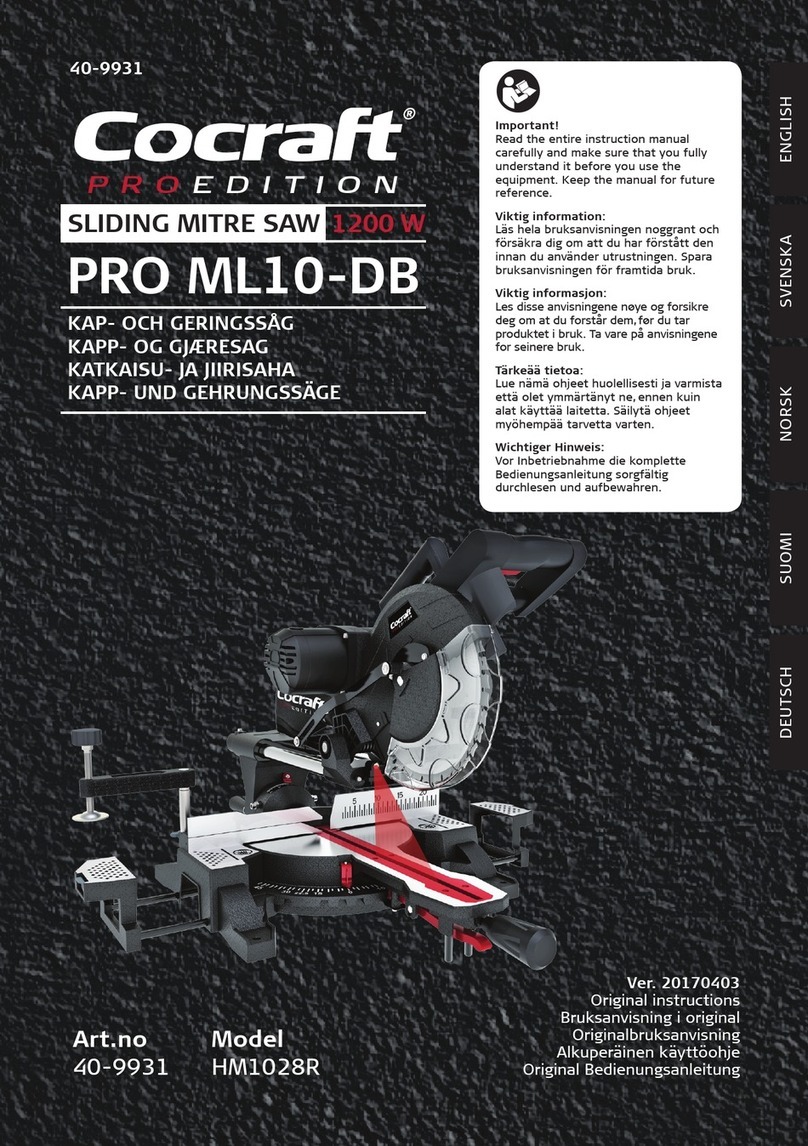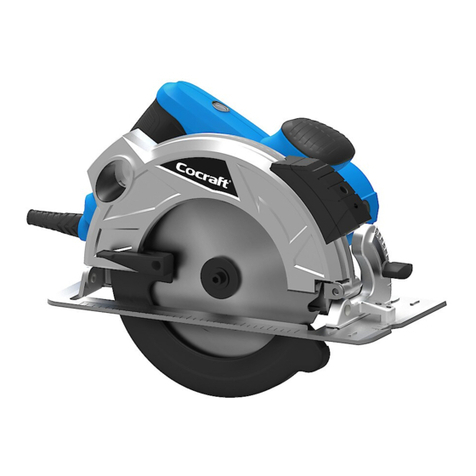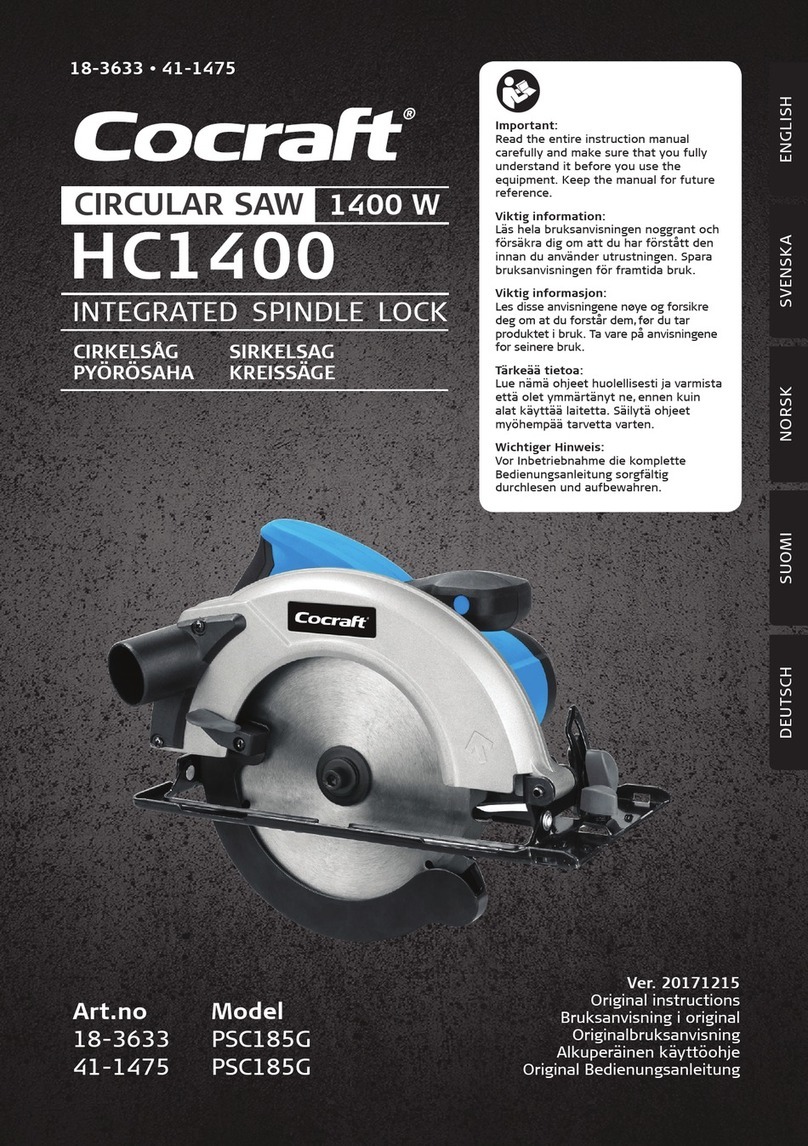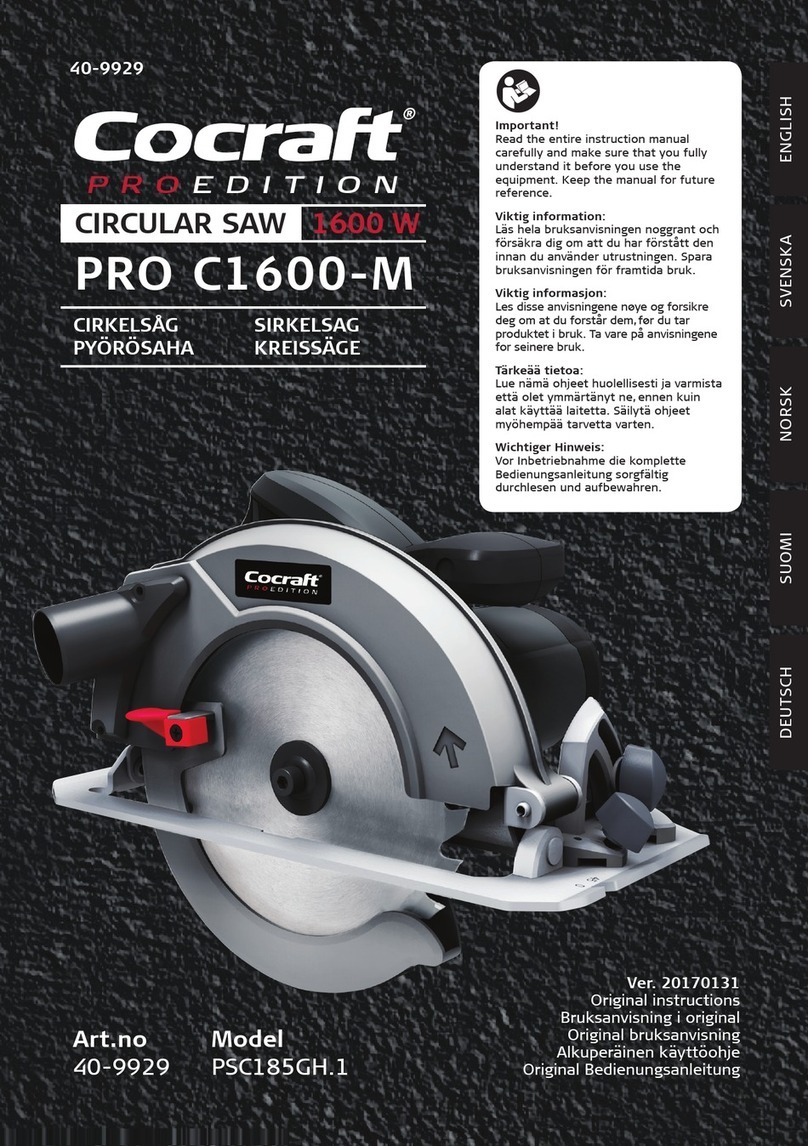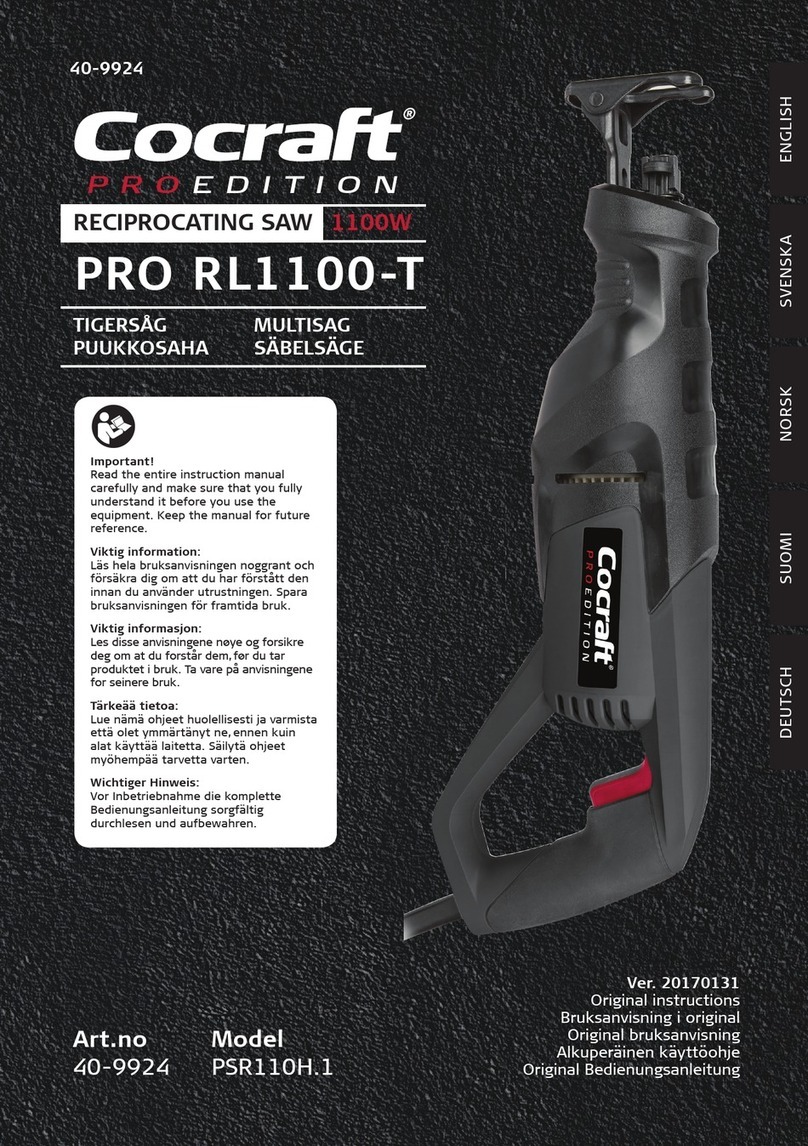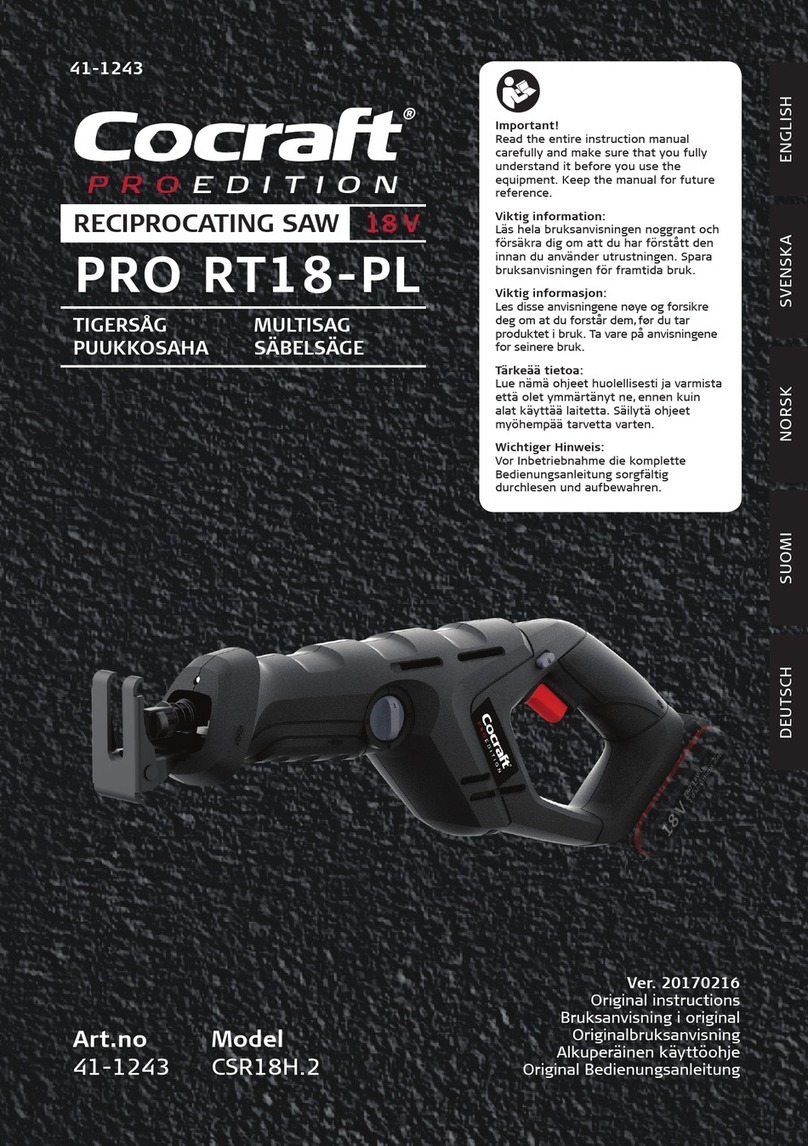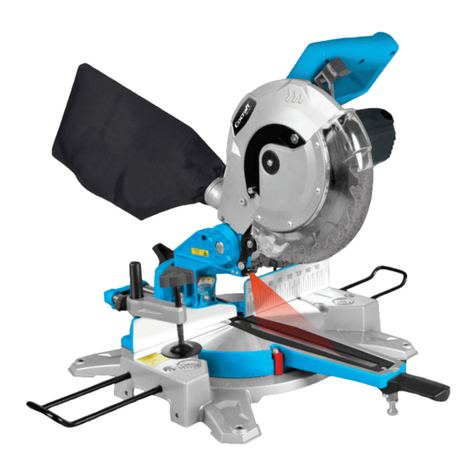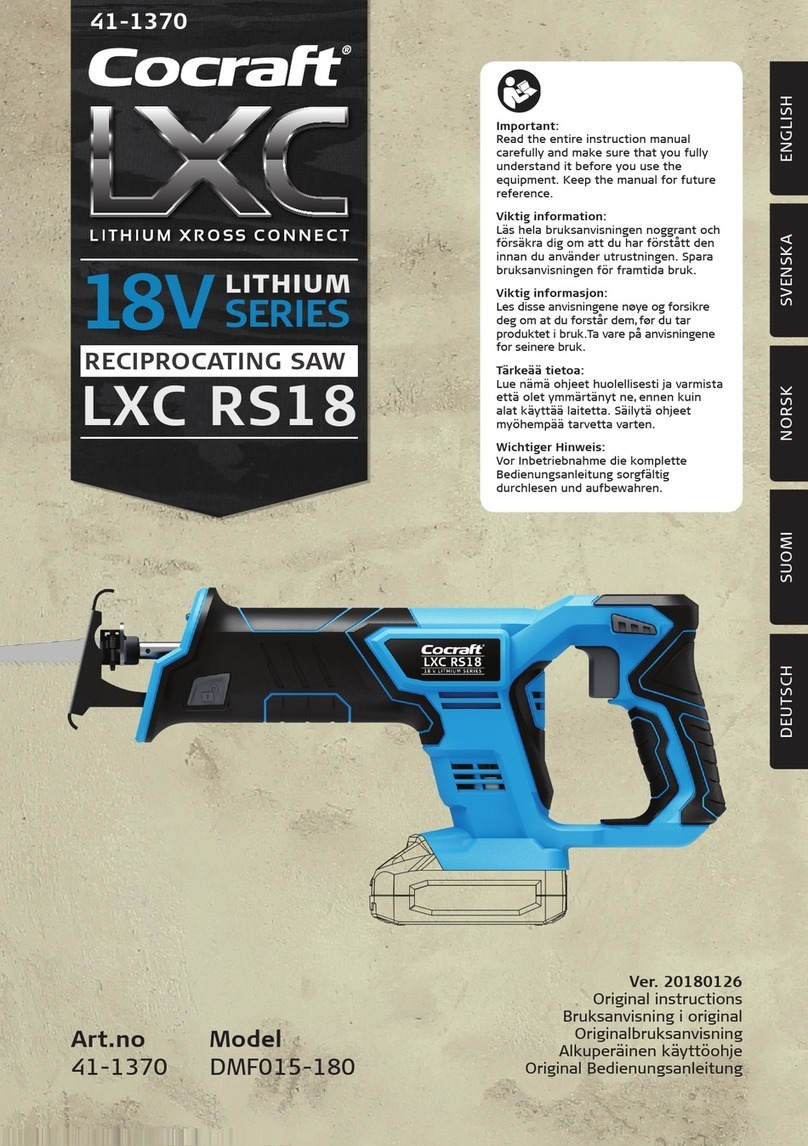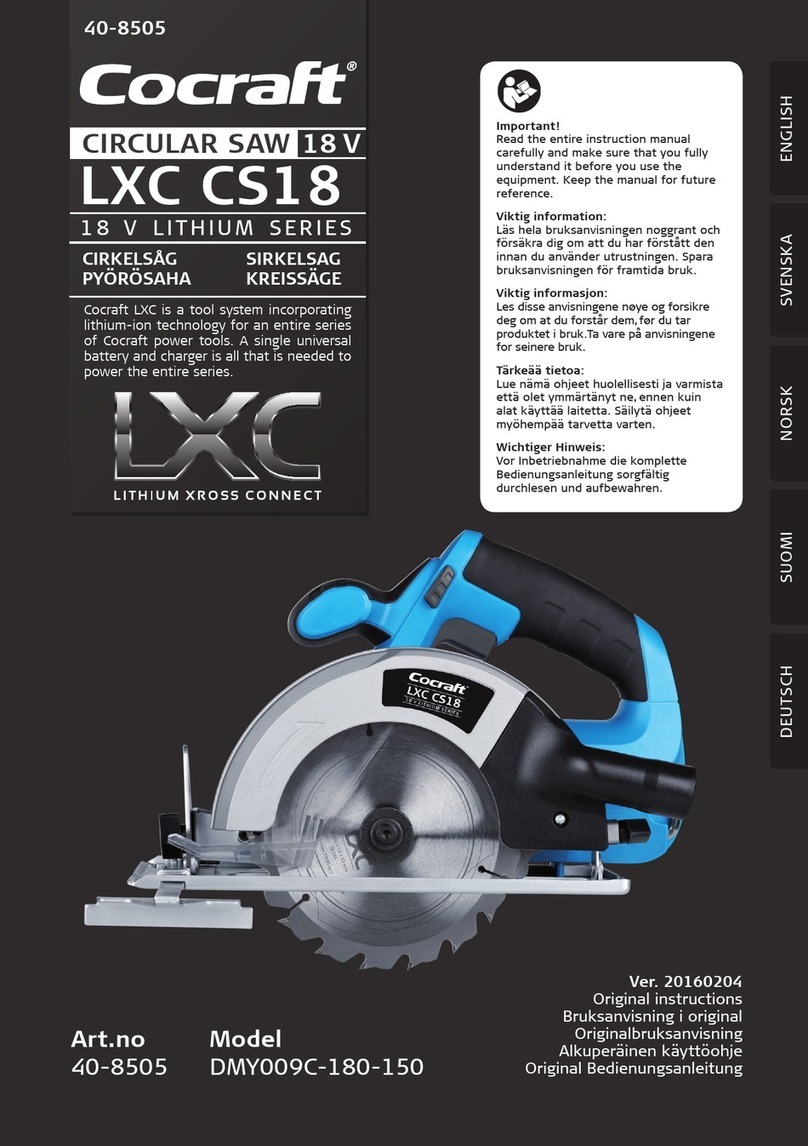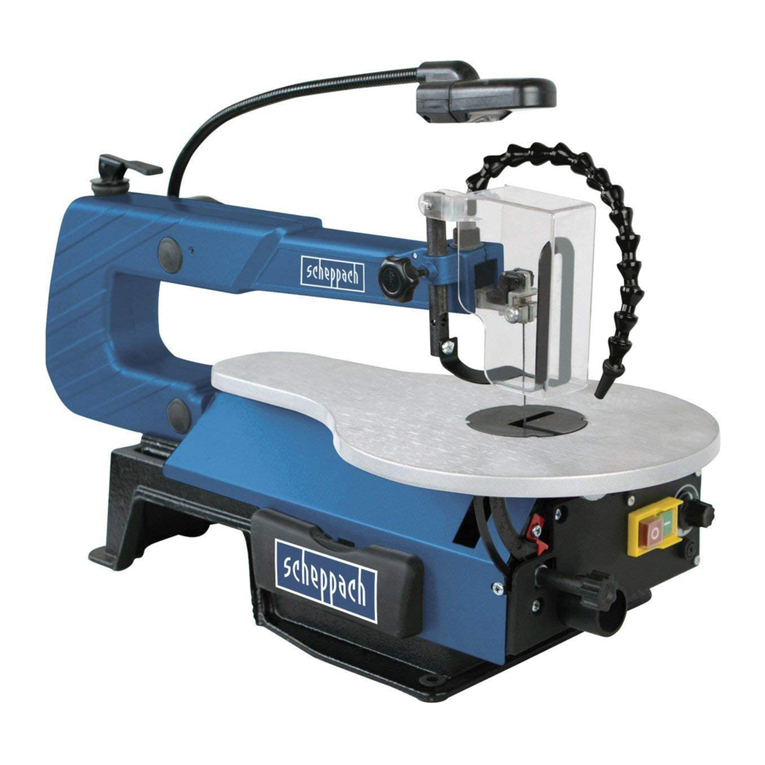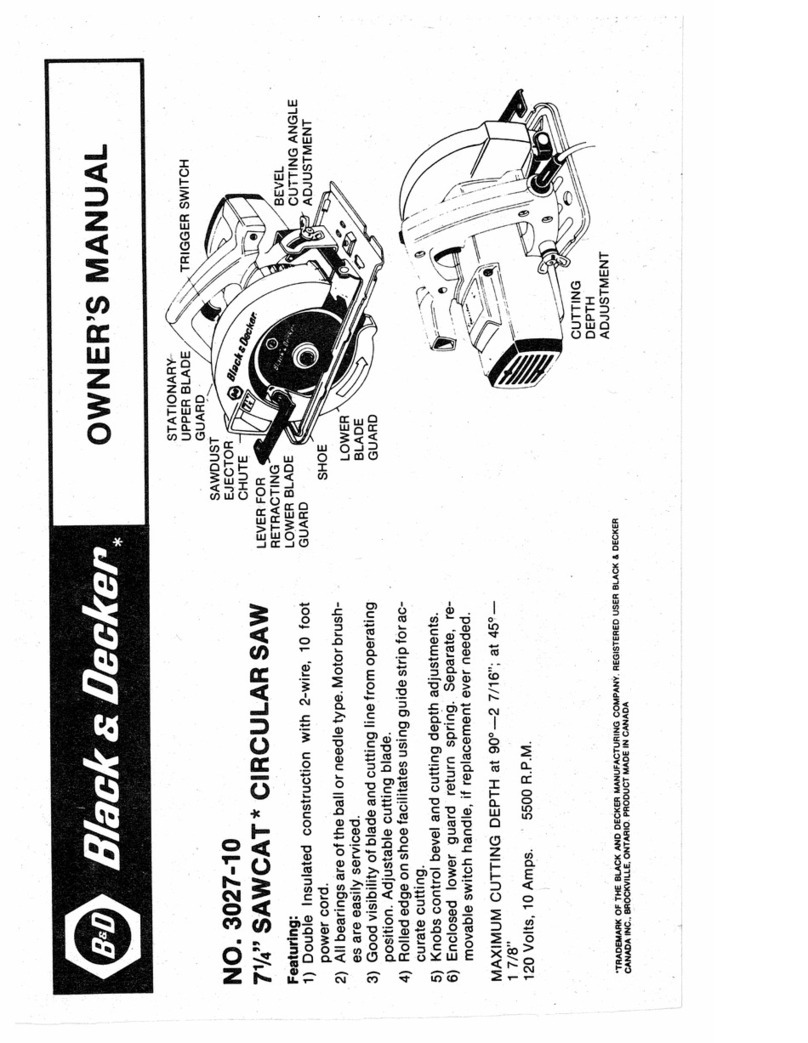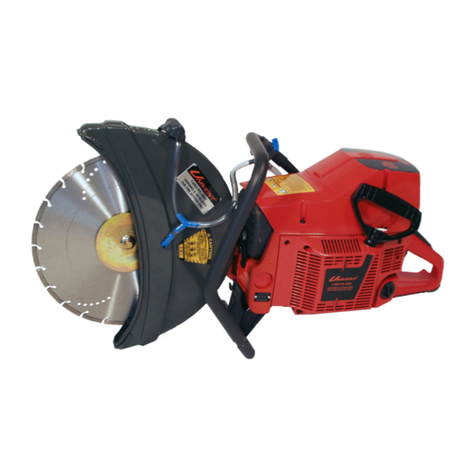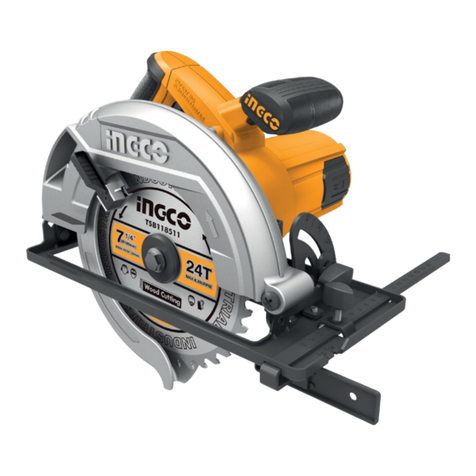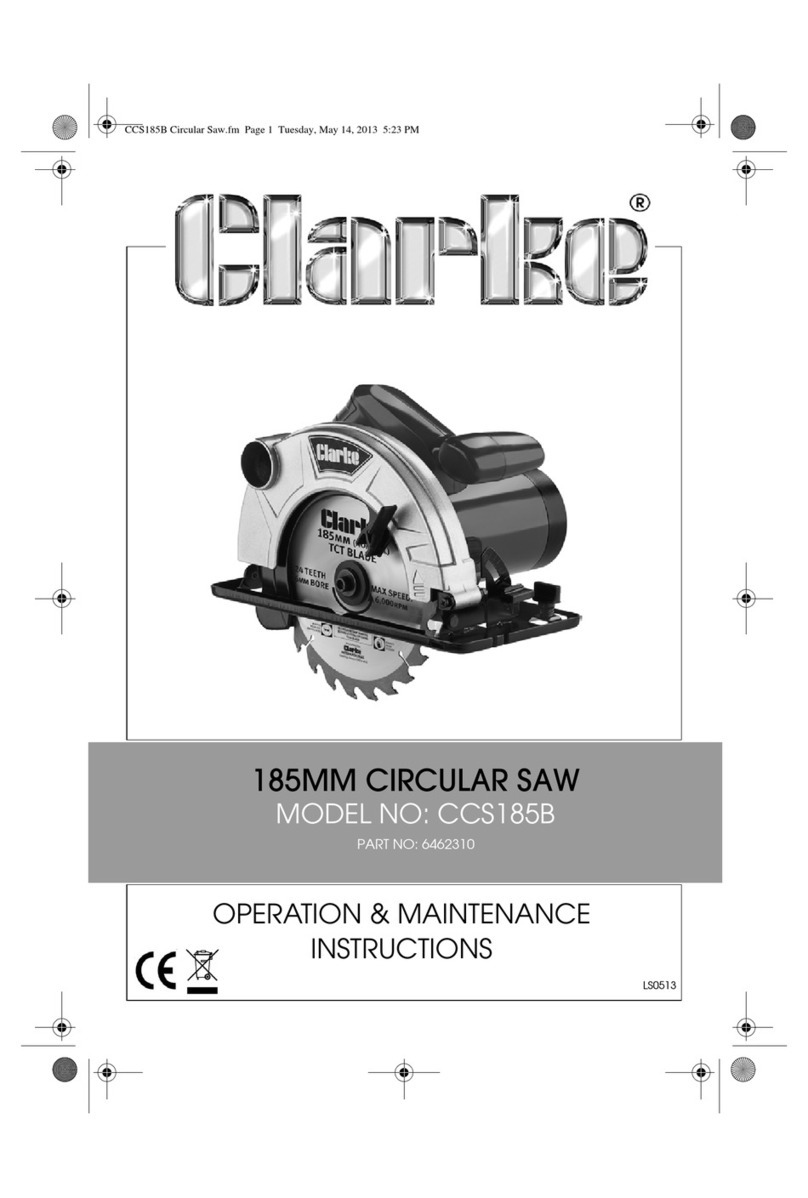
ENGLISH
4
21. Warning:
- Theuse of any accessory or attachment other than one recommended in this instruction
manual may present arisk of personal injury.
22. Have your tool repaired by aqualified person.
- This electric tool complies with therelevant safety rules. Repairs should only be carried out
by qualified persons using original spare parts, otherwise this may result in considerable
danger to theuser.
Specic safety instructions for band saws
• If using afloor stand, make sure that theproduct is securely fastened to thestand and that
thestand is properly assembled and securely fastened to thefloor.
• Make sure that theproduct is positioned in such away that theworkpiece can be worked on
in asafe manner.
• This saw must not be used for wet cutting. Doing so can lead to deadly electric shocks.
This band saw is only intended for dry cutting.
• Thedrive belt must not be put under too much tension, it will last longer if thetension is
released when thesaw is not in use.
• Do not allow thebuild-up of sawdust around themotor or inside theproduct. Piles of sawdust
are afire hazard.
• Thesawblade must not be stopped through theexertion of pressure on theworkpiece or by
applying force to thesides of theblade.
• Theproduct’s safety guards must be in place and functioning properly. Always check that
theblade guides are correctly aligned.
• Never turn theproduct on if thesaw blade is in contact with theworkpiece.
• Make sure that there are no nails or screws in theworkpiece which could damage thesaw blade.
• Do not attempt to modify theproduct or its accessories in any way.
• Do not apply too much pressure to theworkpiece when feeding it into thesaw blade.
Asteady feed rate reduces wear on thesaw and saw blade and consequently increases
theefficiency and useful life of theband saw. Replace any worn table inserts.
• Connect theproduct to adust extractor before starting to saw. Thesaw must not be used if
any of its panels are open.
• Adjust thesaw blade to theworkpiece being worked on.
• When sawing with atilted table, position theguide on thelower side of thetable.
• Position theblade guard as close to theworkpiece as possible.
• Never use damaged or deformed saw blades.
• Replace thetable insert when it is worn or damaged.
• Do not clean theproduct whilst it is in operation.
• Connect adust extraction device to theproduct when sawing wood.
• Do not turn thesaw on when one of theblade pulley wheel covers is open or if any of
theblade guards are not in place.
• Make sure that you use thecorrect feed rate for thematerial that is to be cut.
